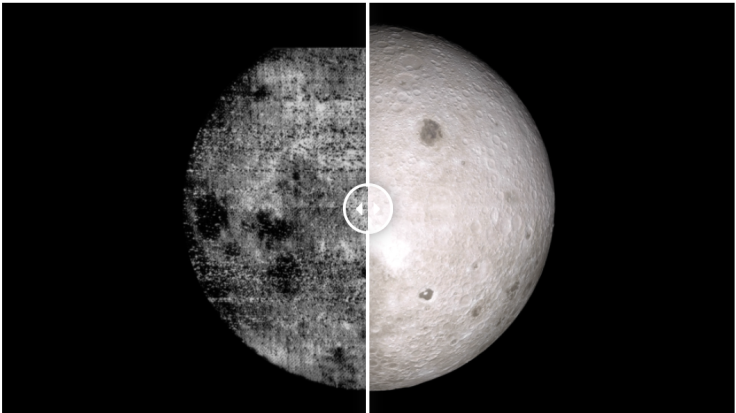Do you know that we can only see one side of the moon from Earth? But in 1959, the Soviet Spacecraft Luna 3 orbited the moon, and for the first time, we were able to see what's on "far side" of the moon.
Tidal locking is responsible why only one side of the moon is visible to us. This means that since the Earth and the moon are in close proximity to each other, the two exert significant gravitational forces on each other.
The side of the moon visible to the Earth is well studied. When NASA sent astronaut to the moon, they landed on the side of the moon which is near to Earth. However, aren't you curious what's on the far side of the moon?

1. The Far Side of the Moon Experiences Day and Night
Some people thought that it's just darkness in the far side of the moon. But contrary to that belief, it also experiences day and night cycles. In fact, when the near side is new moon, the far side is in full daylight. When near side is full moon, it's night-time on the far side, as per Space.com.
2. The First Photos of the Far Side of the Moon Were Courtesy of Soviet Union's Luna 3
Thanks to Soviet Union's Luna 3 spacecraft that orbited the moon more than 60 years ago, we were able to have a glimpse of the far side of the moon in 1959. The spacecraft took a total of 29 film images of the far side.
3. The Far Side of the Moon Was Littered With Craters
The data gathered from the far side of the moon determined that the dark patches on the near side are almost not present on the far side. Instead of dark patches, the far side was littered with craters.
4. Mare Orientale is Located in the Far Side of the Moon
There are a few "mare" or basaltic plains located on the far side of the moon and one of those few is Mare Orientale. It was almost 560 miles or 900 kilometers across. It was caused by an asteroid impact, which happened just under 4 billion years ago.
5. NASA's LCROSS Discovered water Beneath the Moon's North and South Poles
According to EarthSky website, NASA's LCROSS satellite discovered water beneath the moon's north and south poles in 2009. According to the website, the element that was discovered can be broken up into hydrogen and oxygen.
Read Also: New NASA-Funded Commercial Mission Aims to Land on the Far Side of the Moon
6. Another Soviet Mission Was Able to Gather Better Photos of the Far Side of the Moon
Another Soviet mission, Zond 3, was sent to moon in 1965. The spacecraft was carrying better camera. The mission was able to produce 23 very detailed photographs of the far side of the moon. The data from the mission were used to create the first detailed maps of the entire moon surface.
7. The Signal in the Far Side of the Moon is Unstable
During its mission, the Apollo 8 flew to the far side of the moon. But because the signal there is unstable, it was cut for 10 minutes. What happened was a scary moment for the crew of the mission. Thus, there was a sigh of relief when the signal returned.
8. The Astronomical and Scientific Community Wanted to Put Radio Telescopes on the Far Side of the Moon
Scientist and astronomers are getting more interested to the far side of the moon. According to Space.com, the astronomical and scientific community wanted to put radio telescopes and optical telescopes on the far side.
9. Telescopes Could be Built on Craters on the Far Side of the Moon to Avoid Solar Radiation
As solar radiation could potentially become a problem if telescopes will be placed in the far side of the moon, Space.com said that it could be built inside craters to avoid solar radiation.
10. The Near Side and Far Side of the Moon are Already Mapped Out
Thanks to NASA's Lunar Reconnaissance Orbiter, the near side and far side of the moon are already mapped out in exquisite detail. In addition, China's robotic Chang'e 4 mission is also studying what's on the far side of the moon.
Related Article: Did You Know That the First Photo of the Far Side of the Moon was Taken in 1959?









